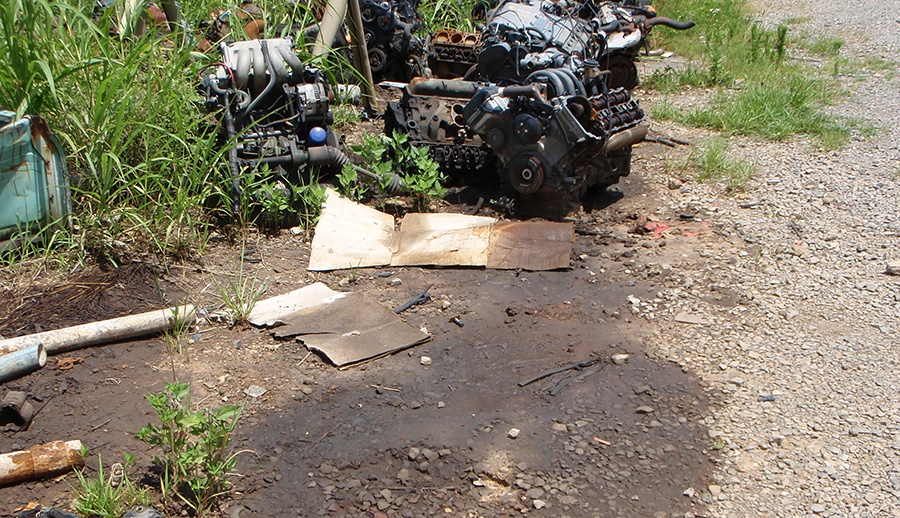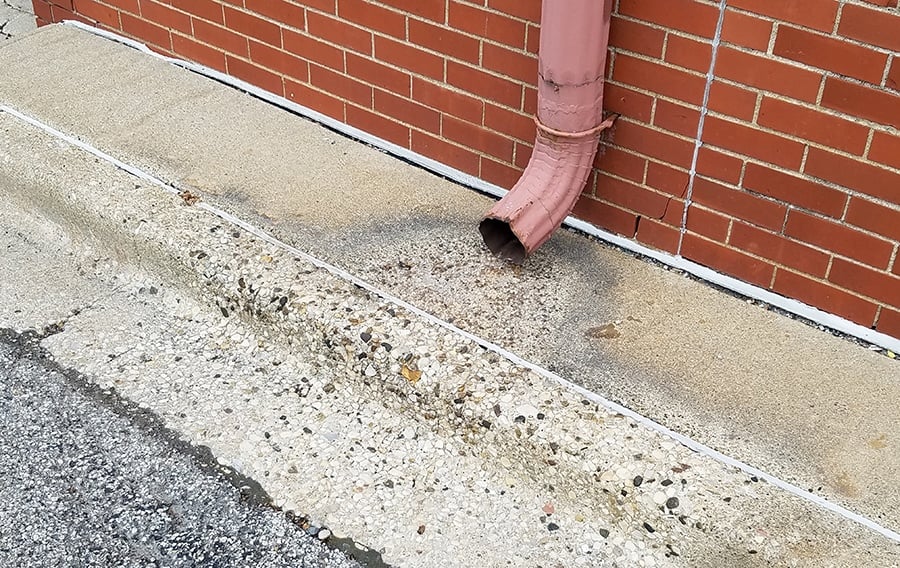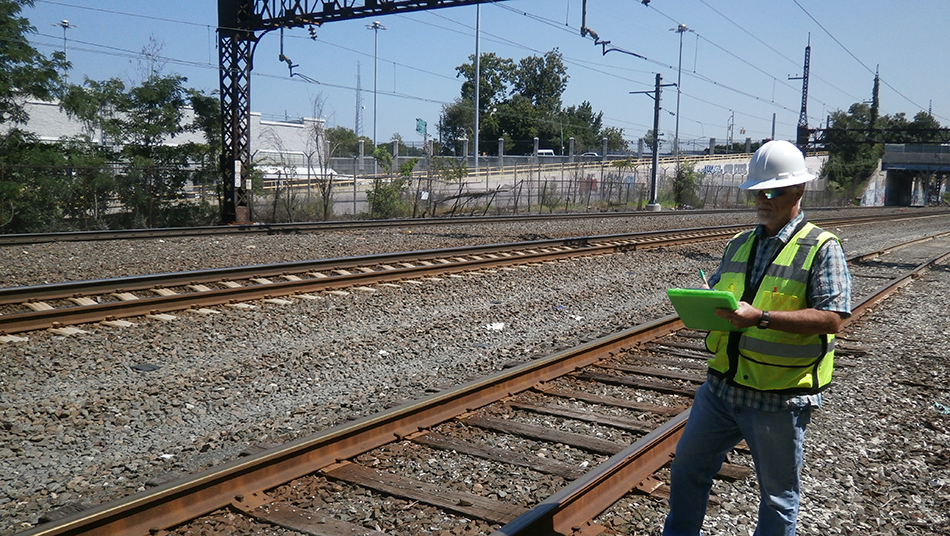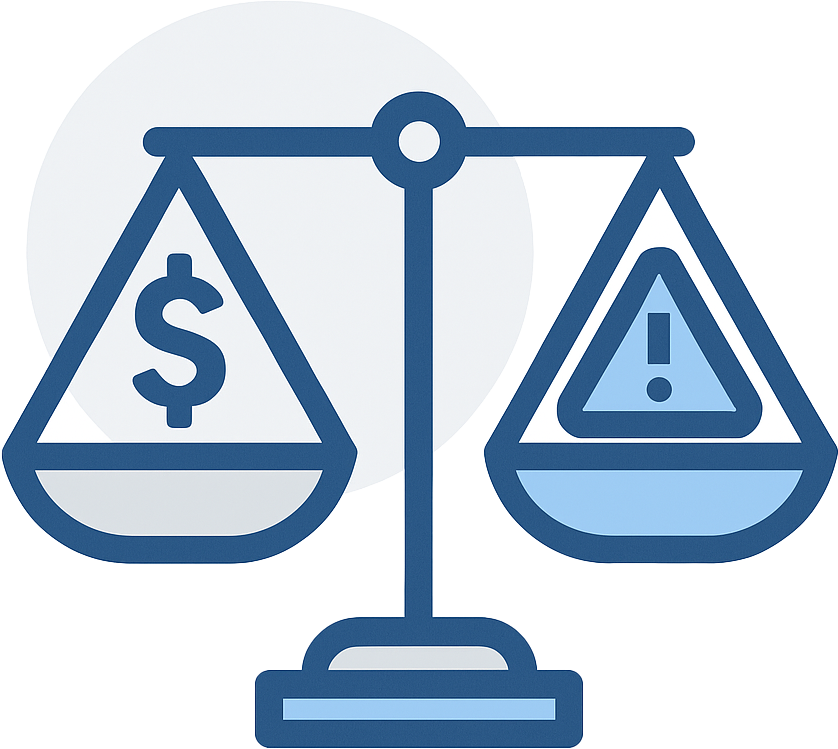We explain both good & bad Phase I Environmental Site Assessment outcomes.
Let's say you've got a million dollar investment on the line. You want to make darn sure that your money's protected, right?
When it comes to investing in a property or a business that occupies a physical location, a Phase I Environmental Site Assessment is the protection you'll need to keep your investment safe. If you're not sure what I'm talking about, check out our article on What protection does a Phase I ESA offer? to see what I mean.
For anyone who's gotten, or are thinking about getting a Phase I ESA, one of the most important things to think about is the outcome. What's the Phase I going to find? Will I have to walk away from this deal? What's good, bad, or an acceptable outcome?
If you're new to a Phase I, or have never faced the unfortunate, but all too real possibility or finding a contaminated property, the outcome can mean the difference from buying the property, walking away, negotiating price, or a wide range of additional possibilities. So, let's discuss what the outcomes of a Phase I mean, and how they'll impact your decision and investment, after we get through some necessary background information.
Why get a Phase I Environmental Site Assessment?
This is simple, but is wrapped in regulatory mumbo-jumbo. The purpose of getting a Phase I ESA is two-fold:
- You want to identify Recognized Environmental Conditions (RECs).
- You want CERCLA liability protection.
Again, if you aren't 100% sure what that protection means, that above link will definitely help fill you in. The short of it is this: the Phase I is most likely going to prevent you from having to pay for expensive contamination clean-up costs down the road by more or less identifying whether there is or isn't any contamination from previous owners.
For example, let's pretend you're about to buy a piece of land. You talk to the seller, and you think the place looks just fine, and the seller was yessing you to death over any worries and concerns, so you go for it and buy the house. You figure a Phase I ESA is going to cost a few thousand dollars (which by the way, we discuss Phase I ESA costs in depth in that link) and you skip the Phase I to save a few bucks.

Six months later you change your mind and go to sell the property. The new buyer gets a Phase I done, and it turns out there's an old oil tank buried on the site, and it's been leaking for 25 years. Surely that's not your fault, right??
Unfortunately no. That leaky tank is 100% you're problem now. You bought it, it's yours. Doesn't seem fair or right, but that's the way it goes.
So, you're now sitting on a piece of property that's contaminated. You're going to have to report to an applicable regulatory agency that there's contamination on-site, and you'll have to pay to get it cleaned up. That's an expensive mistake. Contamination could be a couple thousand dollars or so to upwards of hundreds of thousands of dollars.
Now conversely, if you had gotten a Phase I when you purchased the property, you could have had a few options. You could negotiate the price of the property down significantly to ensure you factor in future clean up costs. You could make the current site owner remediate the site. You could walk away from the deal and spend your money elsewhere. At that point, you have options, all because you got a Phase I.

How a Phase I ESA is Completed
To get technical for a second, a Phase I should be done in accordance with the applicable standard, which is ASTM E1527-13. That standard, suitable for addressing the All Appropriate Inquiry requirements for CERCLA liability protection, is done according to a “scope”, or a defined list of things that must be done & considered for your Phase I ESA to count for anything. Remember there's rules & regulations that have to be strictly met, including who can conduct a Phase I Environmental Site Assessment.
And for anyone wondering what that actually entails, the scope of a Phase I ESA is limited to a visual reconnaissance of the subject property and adjacent properties, as well as some other activities such as a records review, interviews, and more.
The key here is a visual reconnaissance of the subject property. Not sampling, no analyses, no digging or subsurface investigation.

RECs in a Phase I Environmental Site Assessment
I know you're looking for the outcomes, we're getting close. And in order to get there, we need to talk about something absolutely vital to the Phase I ESA process, RECs. Simply put, an REC is a release to the environment, or a potential release to the environment, of hazardous substances or petroleum products on or in the vicinity of the property in question.
That's simple enough, right?
But, just finding and REC isn't necessarily a deal breaker. In fact, an REC doesn't always mean that "something bad" was found. A Phase I could identify an REC at the subject property, but further investigation might be warranted in order to determine if that REC was “something bad” which might potentially require reporting to someone.
For example, if during a Phase I ESA the environmental professional observed an area of stained soils, this might represent a REC (or a de minimis condition depending on its extent and the conclusions of the EP). But, the level of potential contamination of the soil remains unknown.
It might be above applicable reporting levels, or it might not. It wouldn’t be clear to the EP until further investigation – beyond a Phase I ESA normally conducted as part of a Phase II investigation – if reporting was required or not. So don’t automatically assume that a Phase I ESA is going to definitively going to identify “something bad” that might need to be reported.
And, don't automatically don't assume you need a Phase II Environmental Site Assessment. In order to figure out whether or not you'll need a Phase II, make sure you know what a Phase II ESA is first.
And just so you fully understand, there differences in the RECs found on site, which we outline here in RECs in a Phase I Environmental Site Assessment.

Phase I Environmental Site Assessment Outcomes
So, depending on what's found at the property, there are different outcomes you may experience. But, there's unfortunately no cut & dry answer, or any direct correlations between outcomes.
For example, if an REC is found on-site, even if it's bad, that doesn't mean you can't buy the property. Like the example I laid out above, identifying an REC, or "finding something bad" at the property could mean any number of outcomes. It could mean you can negotiate the price of the property, require remediation prior to a purchase, or walk away from the deal entirely.
There's additional things to consider though. Sometimes, it might be clear, even from visual reconnaissance, that the REC represents a condition that requires reporting to some government environmental agency. For example, if a leaking above ground tank holding petroleum was observed to be draining into an adjacent waterway, further testing isn’t needed to know that this is a reportable situation. It's clear and obvious that this is a serious situation that's going to require time, money, and a lot of energy to clean up this contamination, and the authorities should be notified ASAP.
In addition, states may have different requirements on what constitutes a reportable condition, as do certain businesses and institutions.

For example, some states have reporting requirements that say a spill has to be reported only if it’s over XX amount of gallons. So, in some states, small spills or an area of stained soil is observed during a Phase I ESA, it may or may not require being reported, depending on the particular state’s requirements.
Conversely, some businesses will require that any and all spills or levels of contaminations are reported. These businesses tend to be highly risk-adverse, and use their own reporting thresholds, often reporting anything and everything.
For example, we work regularly in an area where a large public utility is known to report every spill or leak they incur, regardless of how small. This means that this company has facilities that have reported & documented contamination, even if it's a coffee cup sized, localized oil spill. The records are full of very, very small spill reports, such as a service vehicle overheating.
Which leaves the question of who needs to report contamination. This can be tricky.
Typically, we strive to require that either our client (usually someone who is buying a property) or the property owner themselves maintain the liability and responsibility to report a condition that we feel requires immediate reporting for whatever applicable reason.
Often, our client (the purchaser) rejects that responsibility, and attempts to require that the property owner be the responsible party, which seems to be reasonable to us. Normally, we handle this through a clearly defined contract specifying who is responsible for what.
But I’ll admit, it’s often a sticky issue, and luckily for us it hasn’t become an issue. But I suspect for many other Environmental Professionals conducting Phase I ESAs, this may have become a problem. We discuss this in detail in do the results of a Phase I ESA have to be reported?

General Phase I Environmental Site Assessment Outcomes
This stuff all means that Phase I Environmental Site Assessment outcomes generally go like this:
- If something bad is found, and it has to be reported, then it gets reported.
- If something bad is found and it's not a reportable amount of contamination, then it's going to entirely depend in the situation. This is like the situation I outlined above.
- If something bad is found and it's already known to be there, this could be an HREC or CREC. Both of these situations identify a REC, but these generally aren't an issue. For example, if you were putting a concrete plant at a site that had a substantial level of oil contamination in the soil, but it was properly cleaned up, that would constitute a Historical REC, or HREC. Or, if there was contamination and instead of it being cleaned up, it stays in place and is under control, that would be a CREC, or Controlled REC.
- If nothing bad is found then you generally have nothing to worry about, but that's not even always the case. For example, you could get a Phase I ESA completed that says everything's just fine. Five years later you could be digging up a portion of your property and find a buried oil tank. If that tank was never registered or documented in anyway, and there was nothing visually apparent at the property that would have identified that tank, then you would be covered under CERCLA liability, and you'd be off the hook for any responsibility (most likely).

So as you can see, it's not cut and dry at all. There's a lot of variation and wiggle room on what requires reporting and when. It takes local knowledge, a clear identification of the parties involved, and what their risk tolerance level is to fully evaluate the outcome of a Phase I Environmental Site Assessment.
Bottom line with a Phase I ESA is this: you’re doing one for the right reasons, and all parties involved should understand the benefits, and the liabilities involved, and their contractual responsibilities. Doing so can usually solve most problems, including who should report should something bad be found. To learn more about Phase I Environmental Site Assessments, click here to contact us online or give us a shout at 609-693-8301 anytime.



















